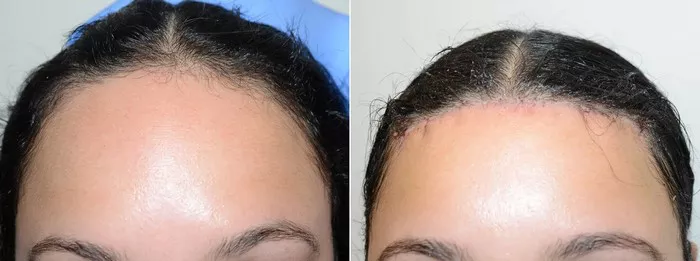Hair loss can be a distressing experience for many individuals, impacting self-confidence and quality of life. As a result, an increasing number of people are turning to hair transplant procedures to address this issue. In India, hair transplant surgery has become a popular option due to its affordability and the high quality of medical care available in the country. However, one of the primary concerns for individuals considering a hair transplant is the cost associated with the procedure. In this article, we will explore the various factors that influence the cost of hair transplant procedures in India, providing potential patients with valuable insights to make informed decisions about their treatment.
Average Cost:
The average cost of a hair transplant procedure in India can vary depending on several factors, including the clinic’s reputation, the surgeon’s expertise, and the technique used. On average, hair transplant procedures in India can range from ₹40,000 to ₹1,50,000 ($540 to $2,000) per session. It is essential to note that these figures are approximate and can vary based on individual cases and requirements.
Cost Range:
The cost of hair transplant procedures in India can vary significantly, depending on various factors. At the lower end of the spectrum, patients may find clinics offering hair transplant services for as low as ₹30,000 ($400) per session. However, it’s crucial to exercise caution when considering such options, as quality and expertise may be compromised at lower price points. On the higher end, some premium clinics may charge upwards of ₹3,00,000 ($4,000) per session, offering state-of-the-art facilities and experienced surgeons. Understanding this range can help patients set realistic expectations regarding the cost of their procedure.
Cost Factors:
Several factors influence the cost of hair transplant procedures in India:
1. Number of Grafts: The number of grafts required to achieve the desired results is a significant determinant of cost. The more extensive the balding or thinning area, the more grafts will be needed, leading to higher costs.
2. Technique Used: Two primary techniques are employed in hair transplant procedures: Follicular Unit Extraction (FUE) and Follicular Unit Transplantation (FUT). FUE is generally more expensive than FUT due to its meticulous and time-consuming nature.
3. Clinic Location: The location of the clinic can also impact the cost, with clinics in metropolitan cities typically charging higher fees than those in smaller towns or rural areas.
4. Surgeon’s Expertise: The experience and reputation of the surgeon performing the procedure play a significant role in determining the cost. Highly skilled and renowned surgeons may charge higher fees for their services.
Procedure Details:
Hair transplant procedures in India primarily involve two techniques:
1. Follicular Unit Extraction (FUE): In FUE, individual hair follicles are extracted from the donor area and transplanted to the recipient area. This technique is minimally invasive, leaves no linear scar, and allows for faster recovery times compared to FUT.
2. Follicular Unit Transplantation (FUT): FUT involves the removal of a strip of skin from the donor area, from which hair follicles are extracted and transplanted to the recipient site. This technique may be more suitable for patients requiring a large number of grafts.
Before and After Results:
While it’s challenging to provide universal before and after results, many reputable clinics in India showcase testimonials and before-and-after photos of previous patients on their websites. These visuals can offer potential patients insight into the potential outcomes of the procedure and help set realistic expectations regarding the results they can achieve.
Consultation Information:
It’s essential for individuals considering a hair transplant to schedule a consultation with a qualified hair transplant specialist. During the consultation, the surgeon will assess the patient’s hair loss pattern, donor area suitability, and overall candidacy for the procedure. Costs can vary based on individual cases, and the consultation provides an opportunity for the surgeon to provide a precise quote tailored to the patient’s needs.
Additional Costs:
In addition to the primary procedure cost, patients should also consider any additional expenses that may arise, such as:
1. Post-Surgery Care: Medications, shampoos, and other post-operative care products may incur additional costs.
2. Additional Sessions: Some patients may require multiple sessions to achieve their desired level of hair density, which will incur additional expenses.
Insurance and Financing:
In India, hair transplant procedures are generally considered cosmetic surgeries and are not covered by health insurance plans. However, some clinics may offer financing options or payment plans to help patients manage the cost of treatment. It’s advisable for patients to inquire about available financing options during their consultation.
In conclusion, the cost of hair transplant procedures in India can vary significantly based on various factors such as the number of grafts required, the technique used, clinic location, and surgeon’s expertise. Patients considering a hair transplant should thoroughly research and consult with qualified specialists to understand the potential costs involved and make informed decisions about their treatment options.


